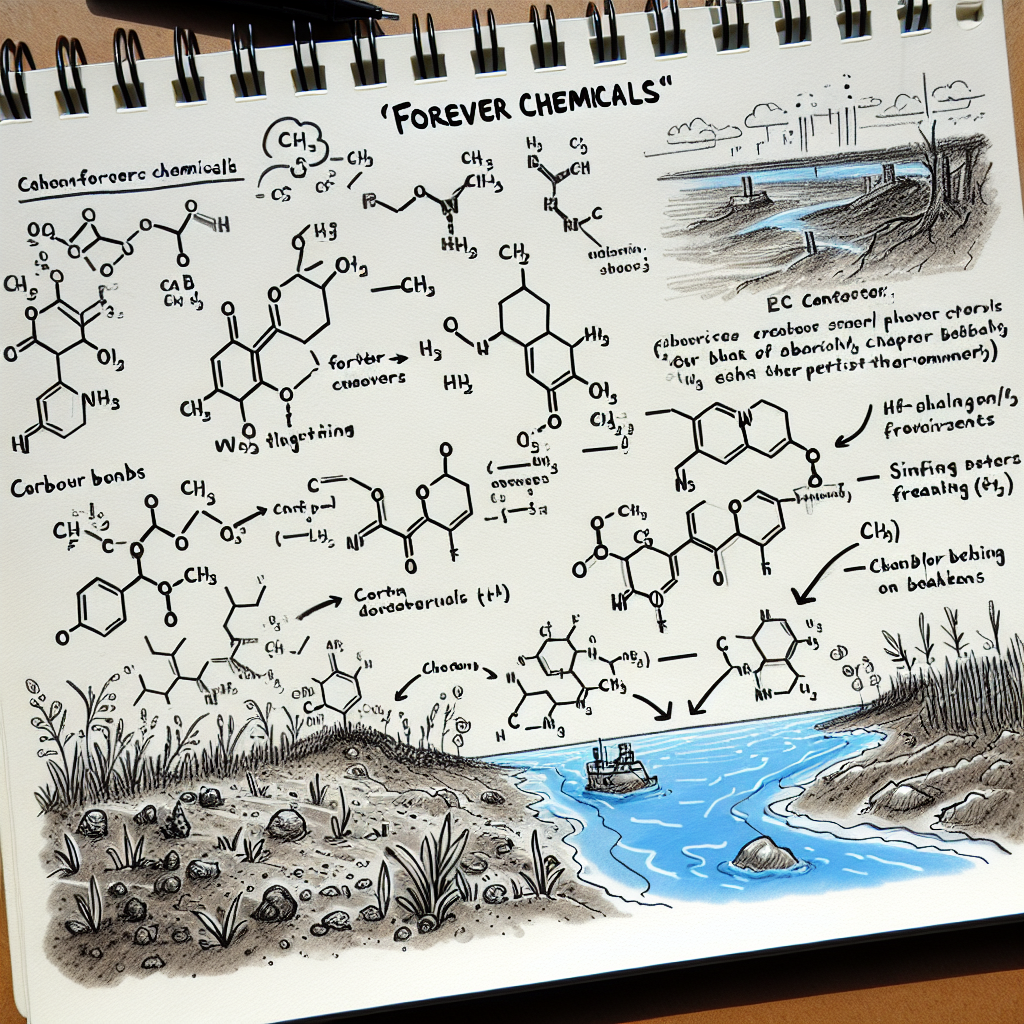Table of Contents
Introduction
“Forever chemicals,” scientifically known as PFAS (Per- and Polyfluoroalkyl Substances), are a group of man-made chemicals that are increasingly becoming a major public health concern. These chemicals are highly persistent in the environment and the human body, meaning they don’t break down and can accumulate over time. While they’ve been useful in various industries for their water- and stain-resistant properties, their long-term effects on health are alarming.
In this article, we’ll dive into what forever chemicals are, where they’re found, their impact on health, and steps we can take to reduce exposure.

1. What Are Forever Chemicals?
Forever chemicals are a class of over 4,700 synthetic substances that have been used in industrial and consumer products since the 1940s. These chemicals are resistant to water, oil, and heat, which makes them valuable for manufacturing.
However, their resistance to degradation is what makes them so harmful. They can persist in soil, water, and air for decades, earning them the nickname “forever chemicals.”

2. Common Sources of PFAS
PFAS can be found in a wide range of everyday products, including:
- Non-stick cookware (like Teflon-coated pans).
- Water-resistant clothing (e.g., raincoats and outdoor gear).
- Food packaging (e.g., pizza boxes and microwave popcorn bags).
- Cosmetics (e.g., waterproof mascara and long-lasting foundations).
- Firefighting foam, widely used at airports and military bases.
These chemicals can leach into water supplies and food chains, increasing the risk of human exposure.

3. How Forever Chemicals Affect Human Health
The health risks associated with forever chemicals are well-documented. Exposure to PFAS has been linked to:
- Cancer: Certain PFAS compounds are classified as possible human carcinogens.
- Hormonal Disruption: They can interfere with endocrine function, leading to fertility issues and developmental delays.
- Immune System Suppression: PFAS can reduce the body’s ability to fight infections and respond to vaccines.
- Liver and Kidney Damage: Prolonged exposure can impair organ function.
- Cholesterol Levels: PFAS exposure has been associated with increased LDL cholesterol levels.

4. Environmental Impact of PFAS
Beyond their impact on human health, forever chemicals wreak havoc on the environment:
- Water Contamination: PFAS are commonly found in drinking water sources, affecting millions worldwide.
- Soil Pollution: These chemicals can contaminate farmland, reducing soil quality and entering crops.
- Wildlife Exposure: Animals exposed to PFAS in water or food sources face similar health risks as humans, disrupting ecosystems.
5. Ways to Minimize Exposure
While it’s impossible to eliminate exposure entirely, there are steps you can take to reduce it:
- Filter Your Water: Use activated carbon or reverse osmosis filters to remove PFAS from drinking water.
- Check Product Labels: Avoid items labeled as “non-stick,” “waterproof,” or “stain-resistant.”
- Limit Fast Food: Many food wrappers and containers are treated with PFAS.
- Avoid Non-stick Cookware: Opt for stainless steel or cast iron alternatives.
- Stay Informed: Research brands and products that prioritize PFAS-free manufacturing.
6. Regulatory Actions and Solutions
Governments and organizations worldwide are beginning to address the dangers of PFAS.

- Bans and Restrictions: Some countries have banned specific PFAS chemicals in consumer products.
- Monitoring Programs: Efforts are underway to measure and limit PFAS contamination in water supplies.
- Corporate Responsibility: Many companies are transitioning to safer alternatives in their products.
Despite progress, there’s still a long way to go in regulating and mitigating the effects of these persistent chemicals.
7. Conclusion
Forever chemicals are a silent threat to both human health and the environment. Their widespread use and persistence highlight the urgent need for awareness, regulation, and action. By taking steps to reduce exposure and advocating for stricter controls, we can protect ourselves and future generations from the harmful effects of PFAS.
For more insights on health and environmental issues, visit Allure Insight—your trusted source for informative and engaging content. Don’t forget to share this article and join the conversation about safer, healthier living!